Why agricultural biodiversity is making headlines in sustainable development decisions today
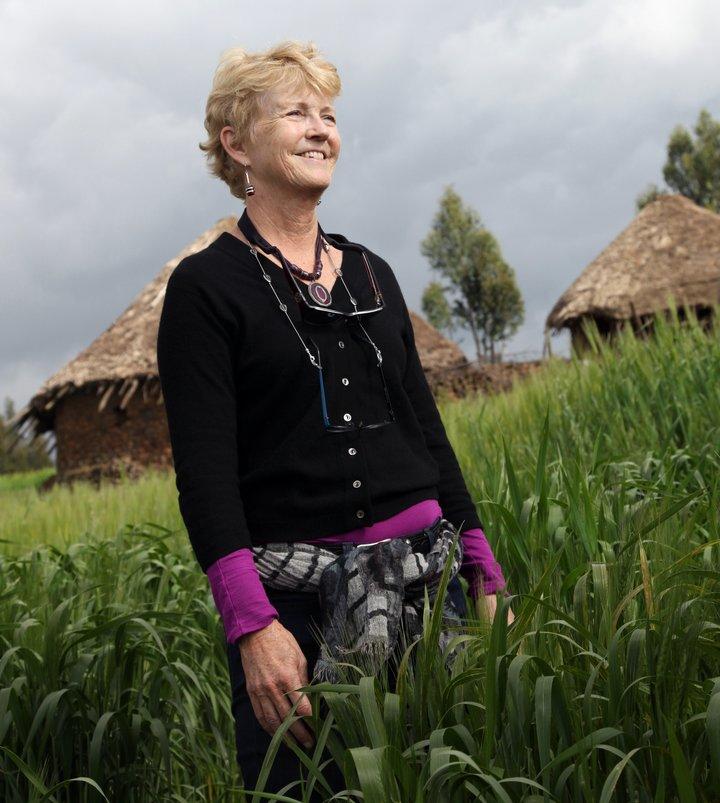
As the global community prepares to gather later this week at UN Headquarters in New York to finalize the SDGs, M. Ann Tutwiler explains in her latest blog why agricultural and tree biodiversity matters for sustainable development.
As the global community prepares to gather later this week at UN Headquarters in New York to finalize the SDGs, M. Ann Tutwiler (pictured left visiting one of Bioversity International's research sites in Ethiopia) explains in her latest blog why agricultural and tree biodiversity matters for sustainable development.
The global community is busy preparing to gather later this week at UN Headquarters New York to finalize the Sustainable Development Goals (SDGs). Unlike the Millennium Development Goals, which focused on developing countries, the SDGs are critical for everyone who shares our ‘common home’ – as Pope Francis so eloquently called the Earth in his recent encyclical. As I wrote in my July blog, although the encyclical is best known for its urgent call to action on climate change, the Pope also devotes six pages to the importance of biodiversity.
So, how is biodiversity faring in the SDGs, and how is agricultural biodiversity – and specifically the work of Bioversity International under its new strategy – contributing to achieving the 17 proposed goals?
Since 1993, when the Convention on Biological Diversity came into force, biodiversity has been strongly placed at the centre of the global environmental agenda. This continues today, and the cross–cutting inclusion of biodiversity as a way to achieve progress is again at centre stage in this very critical debate.
Perhaps one of the significant milestones for biodiversity is the vital importance it has in our planet and our lives as mentioned in specifically mentioned in Goal 15* of the 17 proposed SDGs. Furthermore, the increasing recognition that using and safeguarding biodiversity can deliver on multiple sustainable development goals (including those that do not specifically mention biodiversity in the small print), demonstrates the vital role of mainstreaming biodiversity into other key targets - more specifically Goals 1, 2, 3, 12 and 13.
Let’s look at the evidence:
Goal 1: End poverty in all its forms everywhere
Target 1.5: By 2030 build the resilience of the poor and those in vulnerable situations and reduce their exposure and vulnerability to climate-related extreme events and other economic, social and environmental shocks and disasters 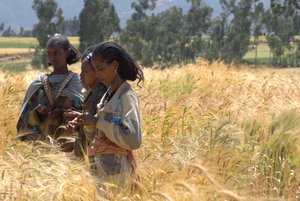 Our research on durum wheat seed systems in Ethiopia has found that more than 20% of traditional Ethiopian durum wheat landraces evaluated in participatory farmer trials, performed better than commercial varieties bred specifically for drought resistance.
Our research on durum wheat seed systems in Ethiopia has found that more than 20% of traditional Ethiopian durum wheat landraces evaluated in participatory farmer trials, performed better than commercial varieties bred specifically for drought resistance.
One variety yielded 61% better than the best commercial variety – an important discovery for food security in the country.
This research is part of our global research initiative ‘Seeds for Needs’ which is currently underway in 11 countries, involving around 25,000 farmers and many crops, including rice, beans, sorghum and cowpea.
Goal 2: End hunger, achieve food security and improved nutrition and promote sustainable agriculture
Target: 2.1: By 2030, end hunger and ensure access by all people, in particular the poor and people in vulnerable situations, including infants, to safe, nutritious and sufficient food all year round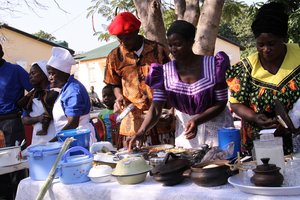 We are working with local communities in Zambia to test a diversity of crops and wild foods that have potential to contribute to an all-year round healthy diet, and to adapt well to local conditions.
We are working with local communities in Zambia to test a diversity of crops and wild foods that have potential to contribute to an all-year round healthy diet, and to adapt well to local conditions.
This research is supported by educational materials about healthy sustainable diets, as well as a seasonal food calendar that shows which foods are available all year round, including the hunger season.
Goal 3: Ensure healthy lives and promote well-being for all at all ages
Target 3.4: By 2030, reduce by one third premature mortality from non-communicable diseases through prevention and treatment and promote mental health and well-being 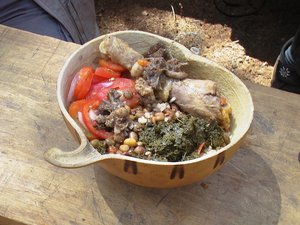 Connecting Global Priorities: Biodiversity and Human Health brings together the current state of knowledge about how biodiversity and human health are linked. The book is a result of collaboration between the Convention on Biological Diversity (CBD), the World Health Organization (WHO) and other partners bringing together expertise and perspectives across different disciplines to further understanding of the use of biodiversity to combat global malnutrition.
Connecting Global Priorities: Biodiversity and Human Health brings together the current state of knowledge about how biodiversity and human health are linked. The book is a result of collaboration between the Convention on Biological Diversity (CBD), the World Health Organization (WHO) and other partners bringing together expertise and perspectives across different disciplines to further understanding of the use of biodiversity to combat global malnutrition.
Bioversity International, along with other individuals and organizations, has contributed to two chapters that investigate the evidence linking agricultural biodiversity and food security, and linking nutrition, biodiversity and human health.
Goal 12: Ensure sustainable consumption and production patterns
Target 12.3: By 2030, halve per capita global food waste at the retail and consumer levels and reduce food losses along production and supply chains, including post-harvest losses 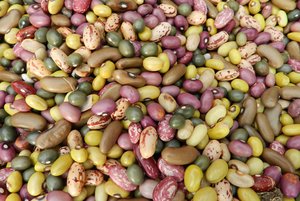 Since 2006, Bioversity International has been working with national partners in China, Ecuador, Morocco and Uganda to see how planting different varieties of the same crop in mixtures can reduce pest and disease damage. Recent findings from trials with the National Agricultural Research Organization in Uganda show that mixing varieties resistant to certain pests and diseases, with those that are more susceptible, greatly reduces the incidence of that pest or disease.
Since 2006, Bioversity International has been working with national partners in China, Ecuador, Morocco and Uganda to see how planting different varieties of the same crop in mixtures can reduce pest and disease damage. Recent findings from trials with the National Agricultural Research Organization in Uganda show that mixing varieties resistant to certain pests and diseases, with those that are more susceptible, greatly reduces the incidence of that pest or disease.
With common bean, we found this to be most effective when at least 50% of a resistant variety is mixed into a plot. For bananas, farmers have reported a 75% reduction in the presence of weevils when they used mixtures. It is important to note that many of the resistant varieties we are finding are actually local crop varieties.
Goal 13: Take action to combat climate change and its impacts
Target 13.1: Strengthen resilience and adaptive capacity to climate-related hazards and natural disasters in all countries  Bioversity International and partners worked for over a year with more than 100 regional stakeholders in Mesoamerica to gather data – geospatial analysis, genebank questionnaires, policy reviews and farmer consultations – and agree how the agriculturally-biodiverse region of Mesoamerica can best use its plant genetic resources to adapt to climate change.
Bioversity International and partners worked for over a year with more than 100 regional stakeholders in Mesoamerica to gather data – geospatial analysis, genebank questionnaires, policy reviews and farmer consultations – and agree how the agriculturally-biodiverse region of Mesoamerica can best use its plant genetic resources to adapt to climate change.
The result is a 10-year roadmap for action, now adopted for implementation by the Ministers of Agriculture who make up the Central American Agricultural Council and the Director General of the Inter-American Institute for Cooperation on Agriculture.
It is also influencing national genetic resource plans – Guatemala is currently reforming its national seed legislation and starting a project to support farmers’ rights in light of actions contained in the plan.
Goal 15: Protect, restore and promote sustainable use of terrestrial ecosystems, sustainably manage forests, combat desertification and halt and reverse land degradation and halt biodiversity loss
Target: 15.2: By 2020, promote the implementation of sustainable management of all types of forests, halt deforestation, restore degraded forests and substantially increase afforestation and reforestation globally 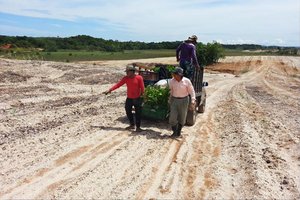 Bioversity International is a partner in 'Initiative 20x20', helping countries in Latin America and the Caribbean to meet their commitments to restore 20 million hectares of land by 2020.
Bioversity International is a partner in 'Initiative 20x20', helping countries in Latin America and the Caribbean to meet their commitments to restore 20 million hectares of land by 2020.
Through our expertise on forest genetic diversity, we have also been contributing to restoring forest ecosystems in Colombia through the development of a decision-making tool to help restoration practitioners select the most appropriate planting materials that match both the intended use of the site and the environmental conditions. This tool will be used to identify sources of planting material for the restoration of approximately 13,000 hectares of degraded Colombian dry forest.
These are just some highlights of how using and safeguarding agricultural biodiversity has help meet multiple Sustainable Development Goals.
I invite you to read many more by visiting our webpage: Agricultural and tree biodiversity for sustainable development
M. Ann Tutwiler
Director General, Bioversity International
*Text taken from Transforming our World: The 2030 Agenda for Sustainable Development – Finalized text for adoption (1 August 2015).
Photo: M. Ann Tutwiler visits Bioversity International's research site for Seeds for Needs in Ethiopia. Credit: Bioversity International
